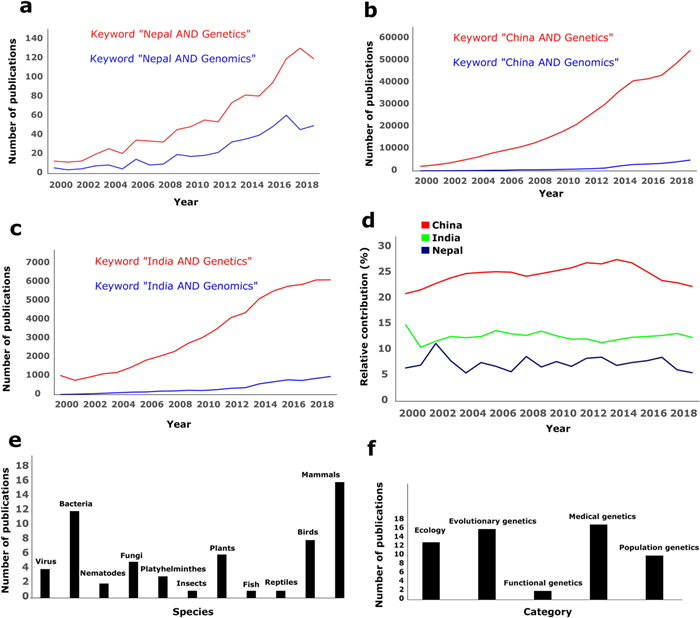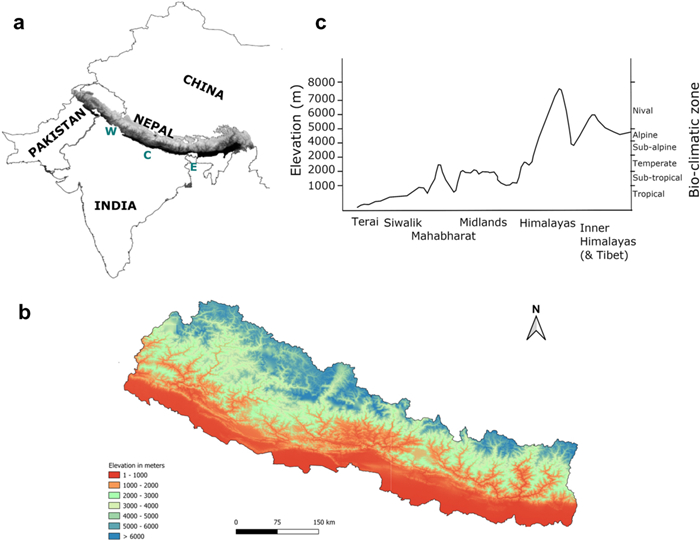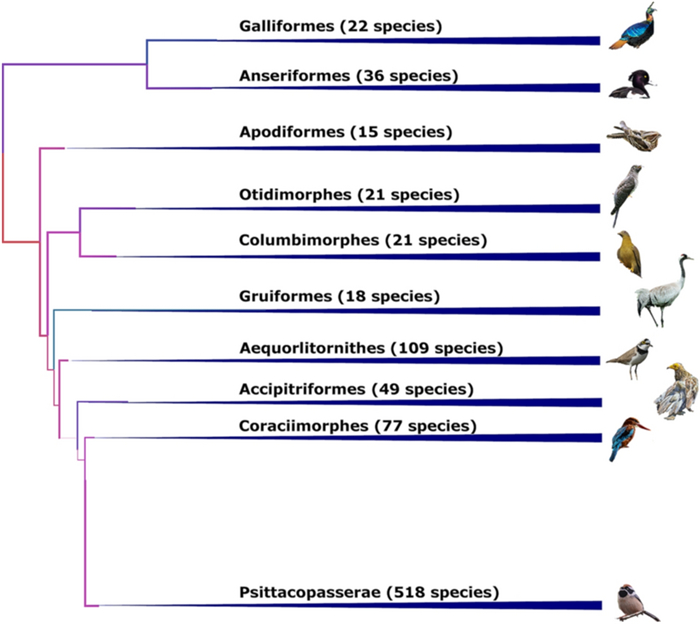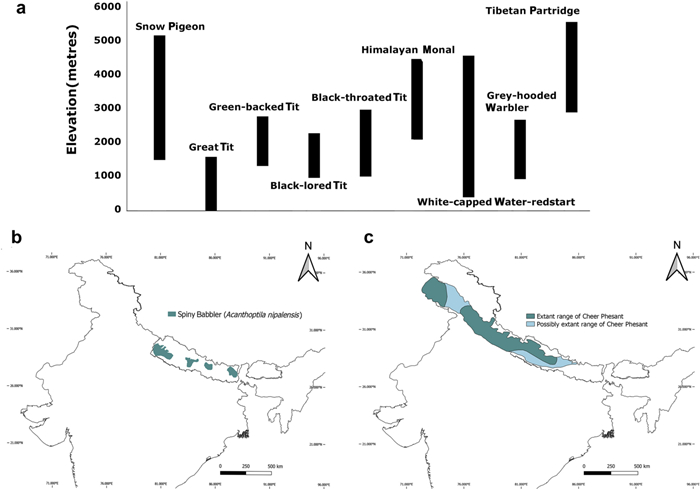
Current trend of genetic/genomic studies. a Trends of genetic/genomic research in Nepal in last two decades; b trends of genetic/genomic research in China in last two decades; c trends of genetic/genomic research in India in last two decades; d relative contribution of genetic/genomic research to overall life science research in Nepal, India, and China in last two decades. e Number of publications across different lineages among 59 studies which were exclusively carried out in Nepal (details in Additional file 1: Table S1) in last two decades; f number of publications across various fields of study carried out in Nepal
Figures of the Article
-
![]() The Himalayas and Nepal. a Geographic range of the Himalayas that are divided into western (W), central (C), and eastern (E) zones. The eastern Himalayas extends from eastern Nepal across northeast India, Bhutan, Tibet to Yunnan in China and northern Myanmar. Western Himalayas refers to stretch from northeastern Afghanistan, southern Tajikistan, Pakistan through North India. In Nepal, eastern Himalayas starts around the Arun river followed by central and western demarcated around Kaligandaki gorge (Päckert et al. 2012). b Map of Nepal showing an altitudinal gradient of Nepalese Himalayas. c Bio-climatic and physiographic zones in Nepal, modified from Paudel et al. (2011)
The Himalayas and Nepal. a Geographic range of the Himalayas that are divided into western (W), central (C), and eastern (E) zones. The eastern Himalayas extends from eastern Nepal across northeast India, Bhutan, Tibet to Yunnan in China and northern Myanmar. Western Himalayas refers to stretch from northeastern Afghanistan, southern Tajikistan, Pakistan through North India. In Nepal, eastern Himalayas starts around the Arun river followed by central and western demarcated around Kaligandaki gorge (Päckert et al. 2012). b Map of Nepal showing an altitudinal gradient of Nepalese Himalayas. c Bio-climatic and physiographic zones in Nepal, modified from Paudel et al. (2011)
-
![]() Current trend of genetic/genomic studies. a Trends of genetic/genomic research in Nepal in last two decades; b trends of genetic/genomic research in China in last two decades; c trends of genetic/genomic research in India in last two decades; d relative contribution of genetic/genomic research to overall life science research in Nepal, India, and China in last two decades. e Number of publications across different lineages among 59 studies which were exclusively carried out in Nepal (details in Additional file 1: Table S1) in last two decades; f number of publications across various fields of study carried out in Nepal
Current trend of genetic/genomic studies. a Trends of genetic/genomic research in Nepal in last two decades; b trends of genetic/genomic research in China in last two decades; c trends of genetic/genomic research in India in last two decades; d relative contribution of genetic/genomic research to overall life science research in Nepal, India, and China in last two decades. e Number of publications across different lineages among 59 studies which were exclusively carried out in Nepal (details in Additional file 1: Table S1) in last two decades; f number of publications across various fields of study carried out in Nepal
-
![]() Phylogeny of birds in Nepal, tree modified from (Prum et al. 2015). The number in parenthesis indicates the total number of species in each branch that are found in Nepal. For details, see Additional file 1: Table S2. The birds shown are representative of each branch; Galliformes—Himalayan Monal (Lophophorus impejanus), Anseriformes—Tufted Duck (Aythya fuligula), Apodiformes—Large-tailed Nightjar (Caprimulgus macrurus), Otidimorphes—Common Cuckoo (Cuculus canorus), Columbimorphes—Yellow-footed Green-pigeon (Treron phoenicoptera), Gruiformes—Common Crane (Grus Grus), Aequorlitornithes—Little Ringed Plover (Charadrius dubius), Accipitriformes—Egyptian Vulture (Neophron percnopterus), Coraciimorphes—White-throated Kingfisher (Halcyon smyrnensis) and Psittacopasserae—Black-throated Tit (Aegithalos concinnus). The size of birds is not in relative scale and is only shown for demonstration. Bird images copyrights—Pemba Sherpa and Manshanta Ghimire
Phylogeny of birds in Nepal, tree modified from (Prum et al. 2015). The number in parenthesis indicates the total number of species in each branch that are found in Nepal. For details, see Additional file 1: Table S2. The birds shown are representative of each branch; Galliformes—Himalayan Monal (Lophophorus impejanus), Anseriformes—Tufted Duck (Aythya fuligula), Apodiformes—Large-tailed Nightjar (Caprimulgus macrurus), Otidimorphes—Common Cuckoo (Cuculus canorus), Columbimorphes—Yellow-footed Green-pigeon (Treron phoenicoptera), Gruiformes—Common Crane (Grus Grus), Aequorlitornithes—Little Ringed Plover (Charadrius dubius), Accipitriformes—Egyptian Vulture (Neophron percnopterus), Coraciimorphes—White-throated Kingfisher (Halcyon smyrnensis) and Psittacopasserae—Black-throated Tit (Aegithalos concinnus). The size of birds is not in relative scale and is only shown for demonstration. Bird images copyrights—Pemba Sherpa and Manshanta Ghimire
-
![]() Some examples of future avian genomics research opportunities in Nepal. a Examples of species that are locally adapted across varying altitudes in the Himalayas. The lower and upper altitudinal limit of each species is shown. Data taken from Inskipp et al. (2016). b Habitat distribution of Spiny Babbler (Acanthoptila nipalensis), the species only found in Nepal and candidate for studies of endemism. c Habitat distribution of Cheer Pheasant (Catreus wallichii), a candidate species for studies of restrictive habitat distribution
Some examples of future avian genomics research opportunities in Nepal. a Examples of species that are locally adapted across varying altitudes in the Himalayas. The lower and upper altitudinal limit of each species is shown. Data taken from Inskipp et al. (2016). b Habitat distribution of Spiny Babbler (Acanthoptila nipalensis), the species only found in Nepal and candidate for studies of endemism. c Habitat distribution of Cheer Pheasant (Catreus wallichii), a candidate species for studies of restrictive habitat distribution
Related articles
-
2023, 14(1): 100130. DOI: 10.1016/j.avrs.2023.100130
-
2023, 14(1): 100105. DOI: 10.1016/j.avrs.2023.100105
-
2023, 14(1): 100095. DOI: 10.1016/j.avrs.2023.100095
-
2021, 12(1): 56. DOI: 10.1186/s40657-021-00292-3
-
2020, 11(1): 7. DOI: 10.1186/s40657-020-00194-w
-
2020, 11(1): 31. DOI: 10.1186/s40657-020-00217-6
-
2018, 9(1): 9. DOI: 10.1186/s40657-018-0100-2
-
2018, 9(1): 45. DOI: 10.1186/s40657-018-0136-3
-
2017, 8(1): 30. DOI: 10.1186/s40657-017-0088-z
-
2015, 6(1): 17. DOI: 10.1186/s40657-015-0025-y


 Download:
Download:








 Email Alerts
Email Alerts RSS Feeds
RSS Feeds